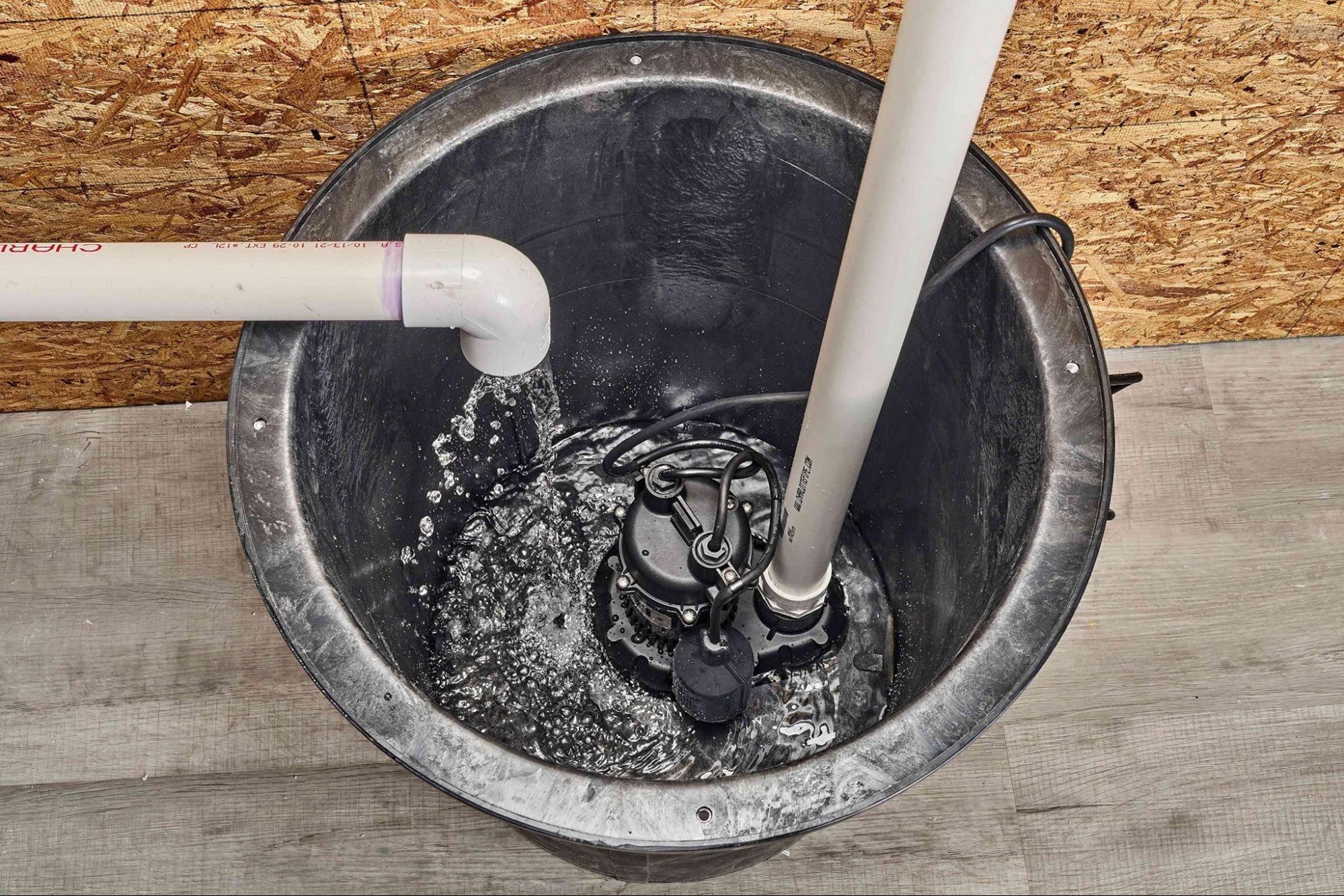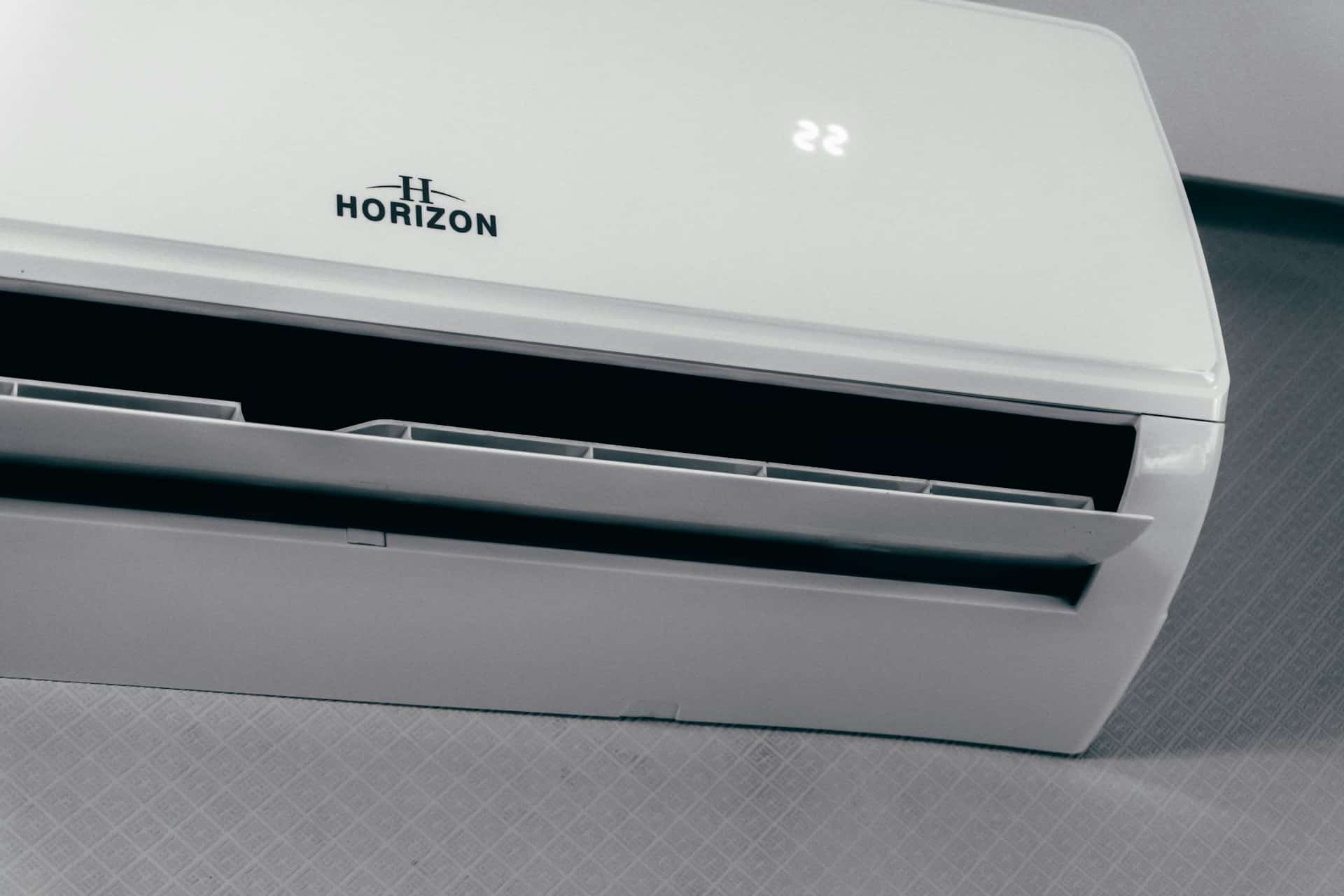Be honest—you probably don’t even think about it until there’s a downpour and you’re suddenly wading through water in your basement, wondering why it’s not doing its job.
Hey, you’re not alone.
Most people forget this quiet little hero sitting in the sump pit, but it’s your home’s first line of defense against basement flooding. The good news?
A little regular maintenance goes a long way. It can make your sump pump last longer, save you from expensive water damage, and give you that sweet peace of mind when storm clouds roll in.
In this guide, we’ll walk you through:
- How to maintain your sump pump
- How to check if it’s actually working
- And when it’s time to replace it
Let’s get into it—before the next storm does. 🌧️💧
How Does a Sump Pump Work?
Before we dive into the maintenance tips, let’s take a quick look under the hood and understand how a sump pump actually works. It’s not rocket science—but knowing the basics helps you catch problems before they turn into soaked carpets and moldy walls.
So here’s the deal:
A sump pump is usually tucked away in a small pit (called a sump pit) at the lowest point of your basement or crawl space. Why the lowest point? Because that’s where water likes to sneak in and gather—especially after heavy rain, melting snow, or even just natural groundwater seepage.
Here’s how it does its job:
- Water collects in the sump pit: Rainwater, melted snow, or groundwater trickles into the pit through drains or natural flow.
- The float switch rises: Inside the pit, there’s a small device called a float switch. Think of it like a toilet float—it rises with the water level.
- Pump kicks on automatically: Once the float hits a certain height, it triggers the sump pump to turn on. No manual work needed!
- Water is pumped out: The pump pulls water from the pit and pushes it up through a discharge pipe.
- Water is sent away from your home: That pipe leads the water far away from your foundation—usually to a storm drain or a spot in your yard where it won’t cause trouble.
🌀 It’s a pretty slick system when it works right.
But when it doesn’t?
You could be looking at major issues—like water-damaged flooring, ruined drywall, musty smells, and mold growth. That’s why staying on top of sump pump maintenance is a big deal.
Let’s look at how to keep it running like a champ. 🧰👇
How to Check If Your Sump Pump Is Working?
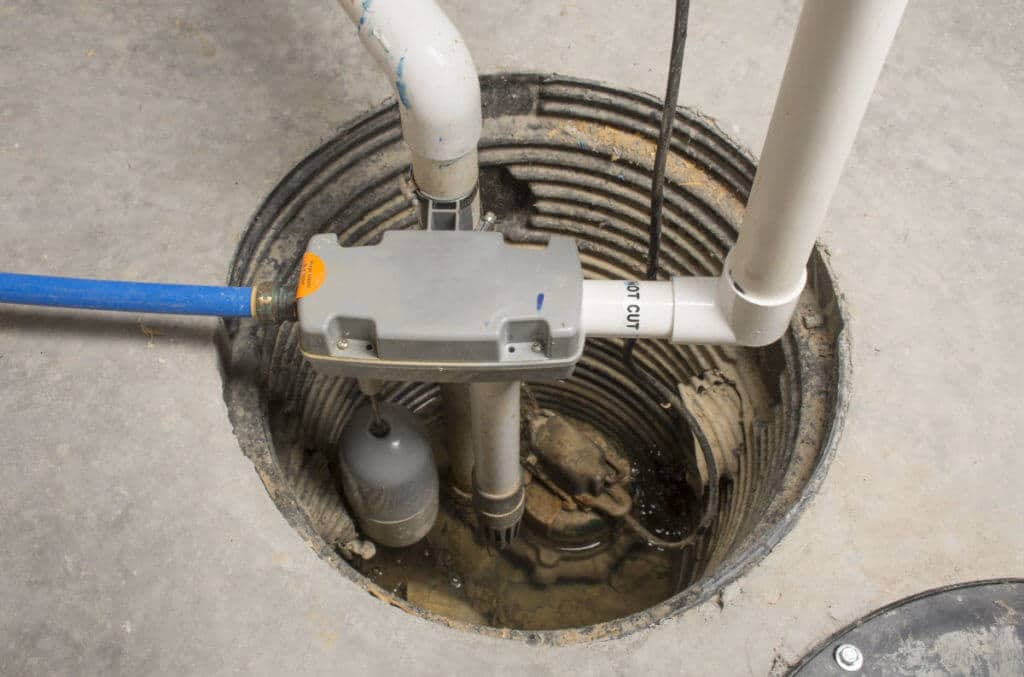
Credit: reddiplumbingwichita.com
Not sure if your pump works? Here’s how to check if your sump pump is working in under five minutes:
- Lift the float gently and listen. A working pump should turn on and begin to hum or pump.
- Pour a bucket of water into the sump pit. The float switch should trigger the pump and remove the water.
- Look at the discharge pipe outside your house. Is water flowing freely? That’s a good sign.
- Listen for unusual noises—grinding or rattling could mean it’s struggling or clogged.
Still unsure? If things look or sound off, it may be time to fix your sump pump or call for sump pump service.
Regular Sump Pump Maintenance Checklist
Want easier, stress-free homeownership? Then add these simple steps to your seasonal home maintenance routine:
✅ Monthly
- Check the inlet screen for debris. A clogged screen restricts water flow and can cause overheating.
- Make sure the float switch moves freely.
- Ensure the discharge pipe isn’t frozen or blocked.
✅ Quarterly
- Pour water into the sump to simulate a flood. This tests the full system.
- Examine the check valve—it stops water from flowing back in after pumping.
- Clean the sump pump pit to prevent sludge build-up.
✅ Annually
- Unplug and remove the pump. Wipe it down and inspect for rust or wear.
- Check the power supply—a backup power source is essential during power outages.
- Test the backup pump (if you have one).
Easier maintenance now means fewer headaches later.
How Long Do Sump Pumps Last?
The average life of a sump pump is about 7 to 10 years—if you keep up with routine maintenance.
But how long do sump pumps last in real life? That depends on:
- How often it runs
- The quality of the pump
- How well you maintain your sump pump
Heavy usage (especially in flood-prone areas) may shorten its lifespan. If your unit is over 7 years old, start watching for signs of wear.
❌ Signs You May Need to Replace Your Sump Pump
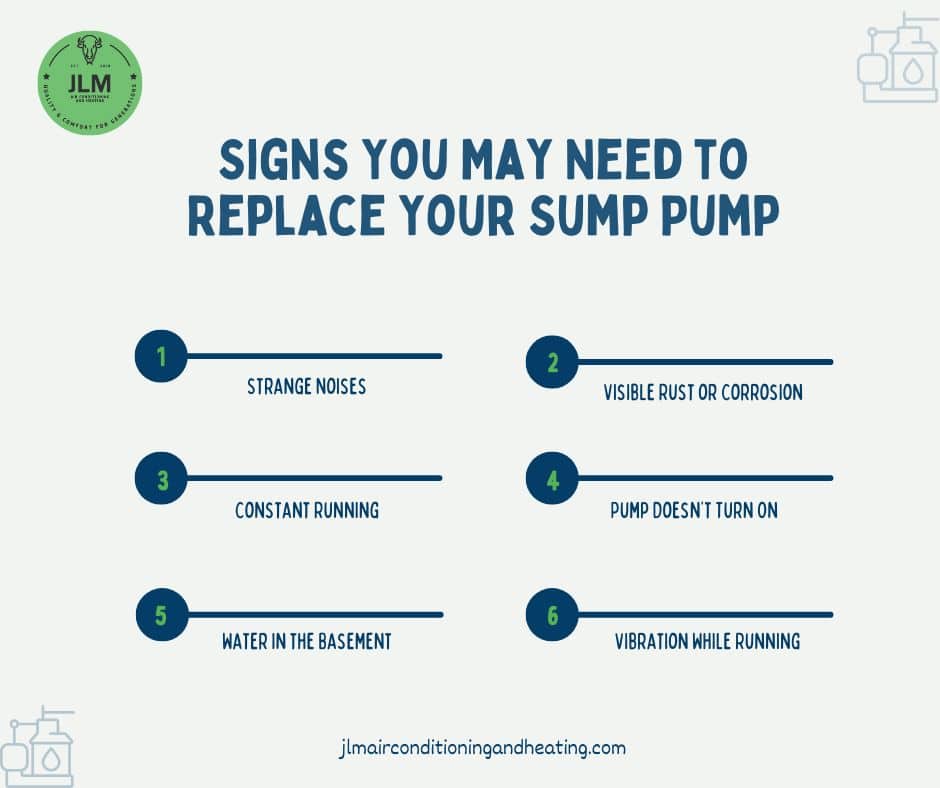
Wondering how often should I replace my sump pump? Keep an eye out for:
- Constant cycling on and off
- Strange noises like rattling or humming
- Frequent sump pump failure
- Rust, corrosion, or visible damage
- Slow or no water discharge
If you’re experiencing any of these issues, it’s time to think seriously about a sump pump replacement. Better safe than flooded.
How to Fix Your Sump Pump Before It’s Too Late
Some problems can be solved without a full replacement. Here’s how to fix sump pump issues yourself (in some cases):
- Pump not turning on? Check the breaker and power source.
- Pump runs but doesn’t pump water? Clean the inlet screen and inspect the check valve.
- Pump runs nonstop? Adjust the float switch or check for clogs in the discharge pipe.
- Weird noises? It may be debris inside the pump or a worn-out motor.
Still not working? It might be time for a pro.
When to Call the Pros (Hint: Sooner Than You Think)
If you’re not comfortable pulling out a pump and troubleshooting wiring, don’t risk it. A failing pump can result in major water damage before you realize it.
That’s where JLM Services comes in.
Whether your sump pump needs a quick check, a deep clean, or a total replacement—we’ve got you covered. Our HVAC and plumbing pros handle everything from inspections to sump pump service and backup systems.
👉 Click here to get help from JLM Services
Because clean basements aren’t just nice—they’re necessary.
⚠️ Common Sump Pump Problems to Watch For
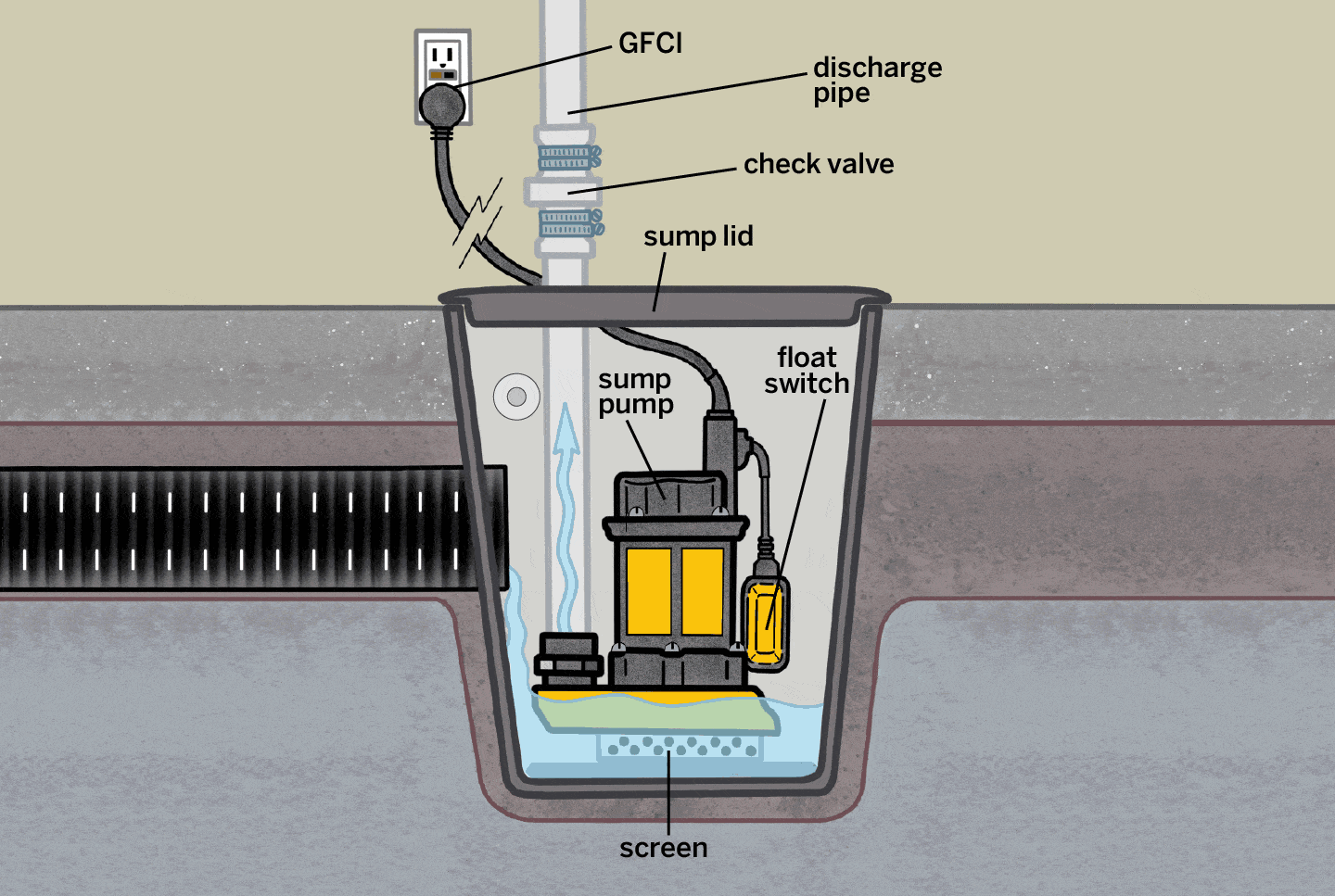
Credit: thisoldhouse.com
Even with perfect care, issues can still sneak up. Keep these top failure points on your radar:
- Power outages without a backup pump
- Stuck or broken float switch
- Blocked or frozen discharge pipe
- Dirty inlet screen
- Aging or worn-out motor
- Improperly installed check valve
- Dry sump pit (can cause overheating)
Most of these can be prevented—or at least caught early—with regular inspections.
The Bottom Line
As we sum up, your sump pump is the silent hero of your home. You don’t notice it—until it stops working and your basement turns into a swamp.
By learning how to tell if your sump pump is working, doing some simple monthly checks, and knowing how to fix your sump pump when needed, you’re saving yourself from surprise repair bills, ruined furniture, and nasty water damage. And if you ever feel unsure or overwhelmed, remember—JLM Services is just a click away to help you with sump pump maintenance, repairs, or full system replacements.
Quick Recap:
- Know how a sump pump works and where it is in your home.
- Test it regularly by pouring water into the sump.
- Clean the inlet screen, check the float switch, and monitor the discharge pipe.
- The average life of a sump pump is 7–10 years. Replace as needed.
- Backup systems are essential during power outages.
Call in the pros if your pump isn’t working properly.
👉 Don’t wait for a flooded basement—maintain your sump pump and stay dry all year round!

